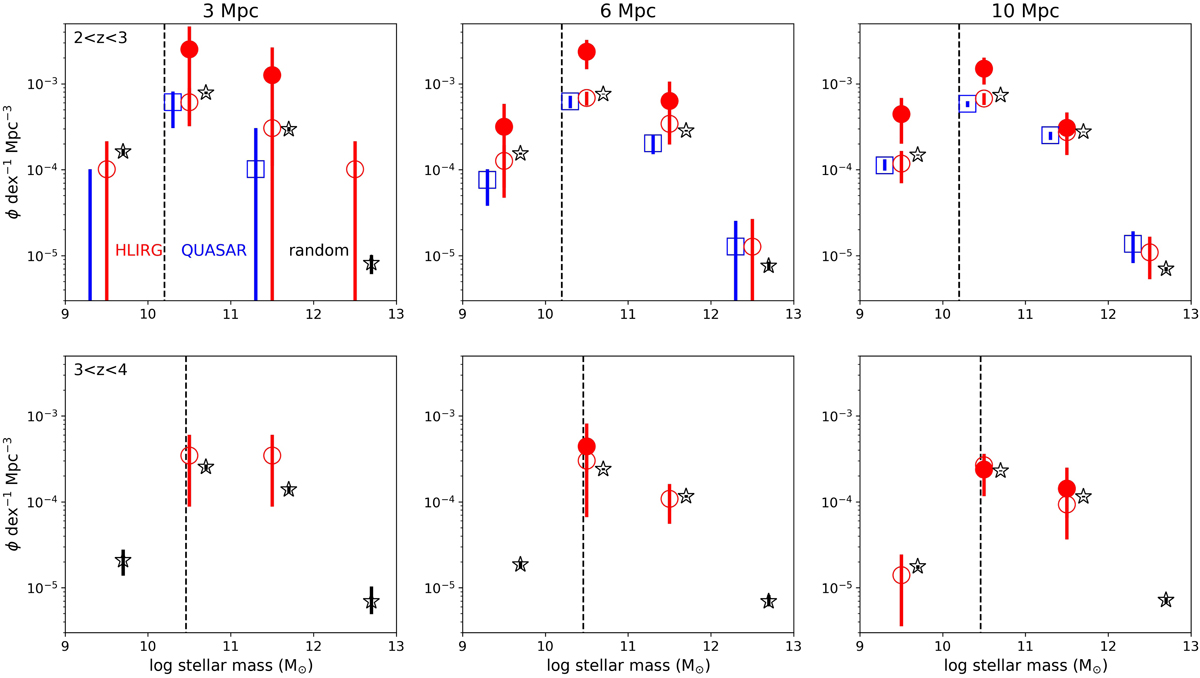Fig. 5.

Download original image
Distribution of HLIRG neighbors (red empty circles), quasar neighbors (blue squares), and random galaxies neighbors (black stars) as a function of stellar mass. The red solid circles represent the subset of HLIRGs which are the most promising protocluster candidates (see Sect. 5). Three columns represent neighbors found within 3 Mpc, 6 Mpc, and 10 Mpc respectively. Two rows display results in two redshift bins. The dashed lines are stellar mass completeness limits in each redshift bins. We combine Poisson error, photometric redshift uncertainty, and standard deviation in the three fields for the HLIRG neighbors. We only consider sampling uncertainty for quasar neighbors and random neighbors. We find no excess in quasar neighbors at 2 < z < 3 and a weak excess in HLIRG neighbors at 3 < z < 4 compared with random neighbors. This excess disappear as searching radius increases. For the most promising protocluster candidates, we observe an enhanced excess signal.
Current usage metrics show cumulative count of Article Views (full-text article views including HTML views, PDF and ePub downloads, according to the available data) and Abstracts Views on Vision4Press platform.
Data correspond to usage on the plateform after 2015. The current usage metrics is available 48-96 hours after online publication and is updated daily on week days.
Initial download of the metrics may take a while.


